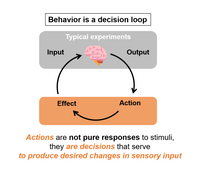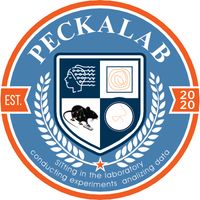Welcome to the pecka lab
We study active audition during natural behavior
Our aim is to understand the neural processes underlying sensory perception and cognition during ethological decision-making (see scheme).
We develop and utilize novel experimental paradigms and methods to identify network representations, brain states and defined behaviors during unrestricted self-motion.
The lab is part of the Division of Neurobiology (Chair of Prof. Grothe), Faculty of Biology, of the Ludwig-Maximilians University (LMU) Munich
From sensory circuits to decisions
Understanding how specific behaviors arise from neural processing is a primary goal of neuroscience. However, many current techniques require minimalistic experimental conditions, which in turn limit their ecological / real-life relevance.
Crucially, behaviors and the underlying neural processes evolved and adapted to a species’ ethological demands. Thus, a deep understanding of brain functions requires studying the brain "in natural action", i.e., during ethologically relevant behaviors.
Active sensing (see scheme above), i.e., voluntary self-motion to gather information about the resulting changes in sensory inputs, represents a fundamental element of such behaviors. Accordingly, we developed a new behavioral paradigm (named SIT – Sensory Island Task, Ferreiro, Amaro et al., 2020) to study how the brain selectively processes sensory information of interest during active exploration of – and orientation in – the environment (Amaro et al., 2021).
SIT is particularly suited for studying sensory-based navigation and decision-making, but allows studying numerous aspects of naturalistic behavior during chronic brain recordings & neural modulations.
Lately we also developed a SIT-based paradigm (Ferreiro et al., 2022; Malzacher et al., 2025), and we utilze mobile EEG and metacognitve monitoring to gain deeper insight into the neural and cognitive mechanisms of human perception and navigation during unrestricted behavior.
To find out more about our research or view our publications, please use the menu above.




